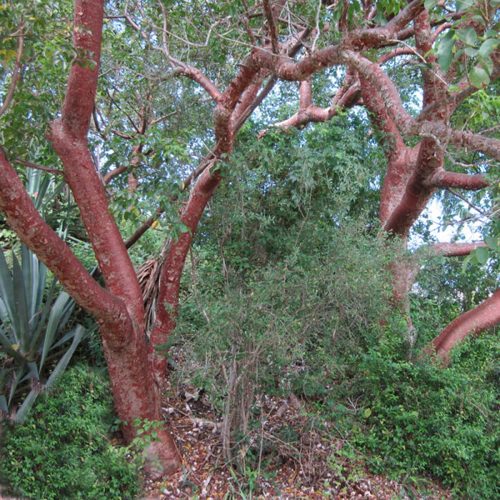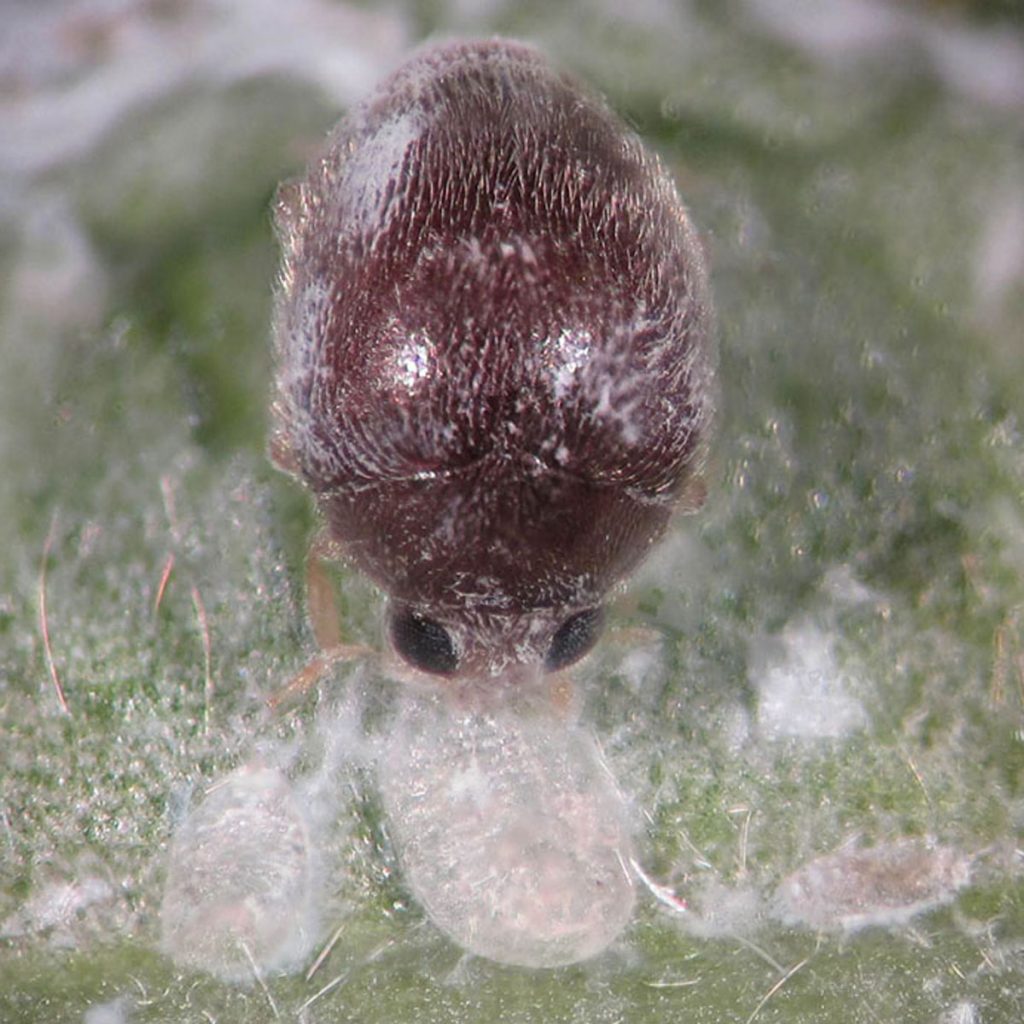In the summer of 2011, we received a report from the Randell Research Center (RRC) of an invasive whitefly. Besides its archeological value, RRC has a beautiful landscape with a variety of trees, shrubs, and grasslands open to the public.

The gumbo limbo trees, which are native, are particularly treasured at RRC due to their aesthetic value and old age. Some of these trees were heavily infested with the rugose spiraling whitefly (RSW), Aleurodicus rugioperculatus, an invasive whitefly species first reported in south Florida in 2009.
Whiteflies are related to scale insects, mealybugs, and aphids. They have a piercing-sucking mouthpart, which they insert into the plant tissue to feed and remove nutrients from the plant. The RSW also excretes a sticky, clear substance called honeydew, which provides an excellent substrate for the growth of sooty mold. Infestations of RSW are not only damaging to the plants they feed on, but create an enormous mess and nuisance with the accumulation of honeydew and growth of sooty mold. Everything in the vicinity of an infestation is affected.
In order to assist the RRC in control-ling this whitefly infestation, two methods of control were evaluated. In the first method, select trees were treated with a systemic insecticide using two methods of application (drench and injection). Insecticide treatments were supplied and applied by TruGreen. The insecticide has been previously used for whitefly control and when applied to the soil or trunk can provide long-term control.
The second method of control involved the release of known natural enemies of the whitefly on certain infested trees. These include a predatory lady beetle (Nephaspis oculata) and a tiny parasitic wasp (Encarsia guadeloupae). Both species are known to kill the immature stages of the whitefly, preventing them from becoming adults and reproducing.
The whitefly population on the insecticide-treated trees was reduced and the natural enemies were success-fully established on infested trees. With the initial knockdown of the whitefly infestation from the insecticide and the establishment of the natural enemies, we hope that the whitefly population on RRC’s trees will remain at non-damaging levels and that the honeydew and sooty mold will no longer be a problem or nuisance.
This article was taken from the Friends of the Randell Research Center Newsletter Vol 12, No. 3. September 2013.

